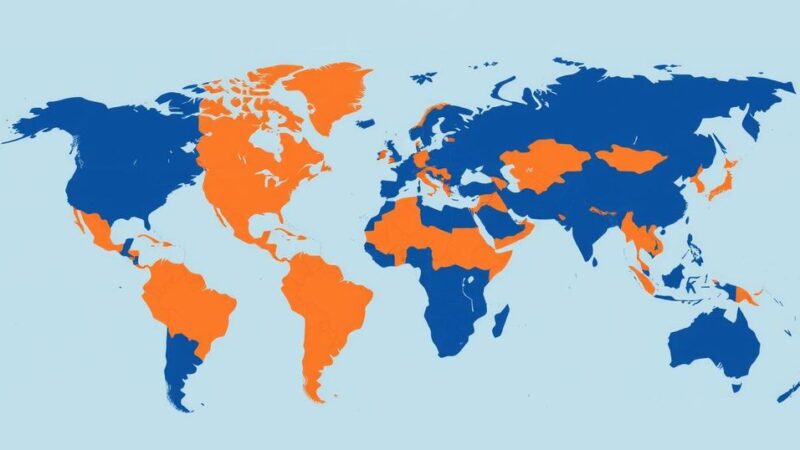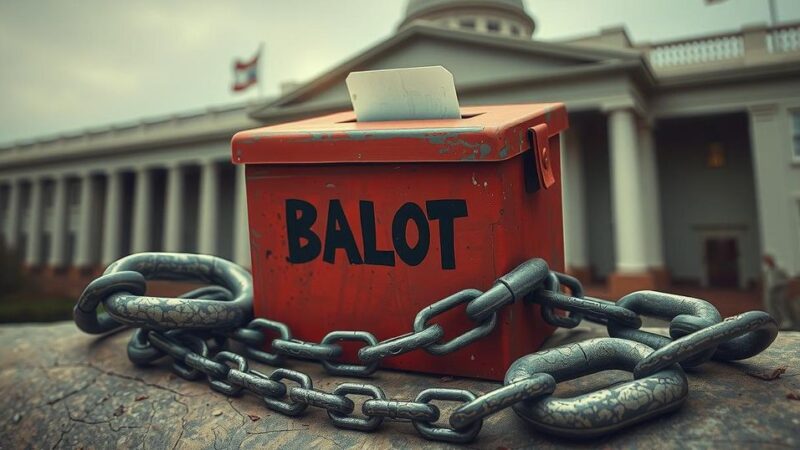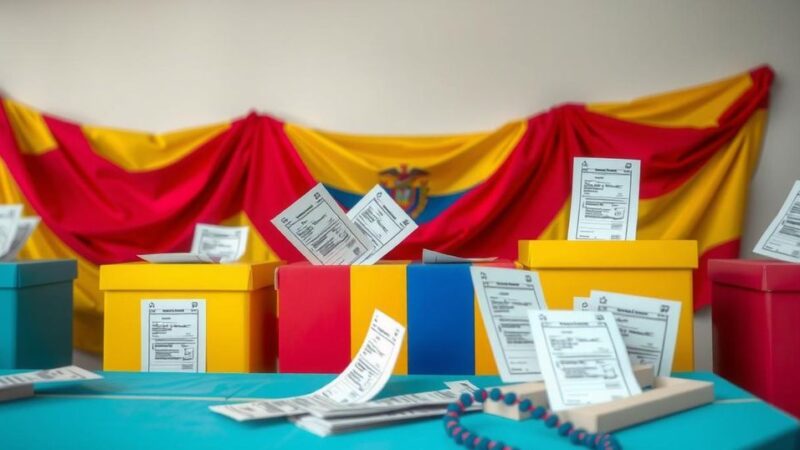Election Day in Ecuador showed diverse weather conditions and strong voter turnout, with 83% participation among eligible voters. The process is governed by strict regulations involving local authorities and the military. The election took place across 3,933 polling places, with a record number of international observers ensuring transparency.
Election Day in Ecuador on February 9 featured varied weather conditions across the country, ranging from sunny to rainy. Ecuador, comparable in size to Colorado, includes diverse geographical regions, such as the Andes mountains, Amazon jungle, and coastal areas along the Pacific Ocean.
In Giron, a town located about 40 minutes from Cuenca, voters encountered no delays when casting their ballots. However, in Cuenca, polling locations were crowded, creating lines for voters to enter and cast their votes amid a subdued atmosphere, adhering to the electoral silence period where campaigns and alcohol sales are prohibited.
Vendors outside polling places offered protective sleeves for the identification cards issued post-voting. The cost of lamination was 25 cents in Cuenca and 50 cents in Giron. These identification cards are crucial for various legal transactions, and failure to produce them results in fines and administrative requirements for non-voters.
Approximately 80% of eligible voters participated in the last presidential election, with an impressive 83% voter turnout for this election. In contrast, the United States presidential election saw nearly 90 million eligible voters abstaining from voting, with no financial penalties or consequences for non-participation.
The voting process in Ecuador involves local police, military presence, and party representatives. Voters receive four ballots and indicate their preferred candidate using a pencil before submitting them into secure ballot boxes, with designated boxes for presidential and assembly candidate votes.
Polls close at 5 p.m., at which point military personnel seal the voting locations. Election workers then count and record the ballots manually, transmitting results electronically to central election offices while the sealed ballot boxes are transported by military personnel to regional voting headquarters.
A record 943 international observers monitored the vote counting process in Ecuador, ensuring transparency. The election took place across 3,933 polling locations nationwide, reflecting substantial civic engagement in the democratic process.
The recent Election Day in Ecuador showcased a significant turnout, with 83% of eligible voters participating in the electoral process. The structured approach to voting, involving multiple checks and balances from military oversight to international observers, illustrates Ecuador’s commitment to a transparent electoral system. In comparison, voter participation in the U.S. highlights a stark contrast, demonstrating different cultural attitudes towards civic duty and electoral engagement.
Original Source: peekskillherald.com






